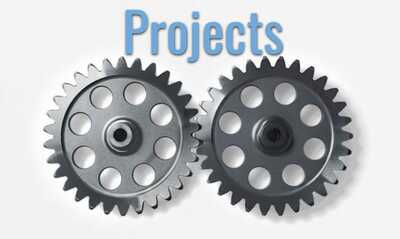
ALCPress.org is an incubator for projects that involve Internet technology in some form and connected to the world around us. Here's a list of projects—some are complete, some are in progress, and some are ideas. ALCPress.org hosts projects and web pages that are non-profit efforts.
WWII Holocaust
This project involves discovering and mapping the locations of concentration camps and ghettos in Europe, Africa, and the Soviet Union during WWII. These were operated by the fascist governments of Adolf Hitler's Nazi Germany, Benito Mussolini's Italy, and Francisco Franco's Spain.
Some people claim that there were 40,000 concentration camps and ghettos during WWII. We've found the locations of almost 4,000 of them and have many more to research. Visit the project page to see what we have so far.
World War II—Aleutians
When WWII vet Paul E. Carrigan was encouraged by his family and friends to write a book about the time he served in the Aleutian Islands with the U.S. Navy, he had no idea that he'd spend 17 years (1979-1996) writing the book but then suffer a computer crash—the electronic copy of his book was gone. Paul died in 2001 without his book being published. Fortunately, he printed out a copy of his manuscript before his computer crashed. After his death, someone scanned the manuscript, producing an electronic copy that was rich with scanning errors. The book was still not publishable without lots of work.
Not wanting this important piece of American history to be lost, we spent months preparing the book for publication. It's almost finished. It will be available soon here.
Amazon Project
Amazon has grown to be very large and is impacting the retail industry significantly. This project aims to quantify Amazon's growth. We begin by creating a database of their warehouse locations and size (square footage) as well as opening dates of the warehouses. You can find a Google map of the data we've collected so far.
Note that Amazon's worldwide facilities occupy a grand total of about 451 million square feet of space!
Int'l Monitoring System
Few people know that the world is covered by a sensor network that can detect nuclear blasts anywhere on the planet. This was put in place in preparation for the international Comprehensive Test Ban Treaty that would ban the testing of nuclear weapons. The problem is the treaty has not been ratified by some of the governments of the countries who agreed on the terms of the treaty.
This project has created a database of the locations of the sensors and a Google Map that displays them. Now, if we can find a way to leverage this information to convince governments to ratify the treaty.
Observatories Project
This project is intended to educate the public about the network of observatories and their telescopes/sensors around the world. The project has already collected the locations of these observatories and presents them on this Google map.
Energy
We're researching the field of energy production and distribution. This project is in its initial stages. We've finished mapping the locations of nuclear power plants— new plants don't spring up often. We've mapped wind farms but new ones are popping up too often for us to keep up. We have the same problem with solar plants. Until we get more help, we've put a hold on mapping renewable energy.
We've started collecting information about energy distribution and smart grids by mapping two high-voltage DC transmission lines in the United States. You can find our preliminary work here: Energy menu
War
The cost of wars is high in every metric and the long term costs are often ignored. This project examines the after-war costs of veterans. We've already built a list and map of cemeteries and memorials for fallen soldiers. We'll be building a similar list of veterans hospitals and other health care facilities.
Geographic User Interfaces
We noticed that some websites publish information about places but don't interact with the user using geographic/spacial means. Good examples are two popular websites that provide historical information, photos, and reader comments about airfields that are abandoned or not well-known but have the user select the airfields using a hierarchical text-based menu, and without the ability to search by any criteria. So, we engineered a map-based user interface that augments the sites' normal text-based interface.
Compare the text-based and map-based user interfaces for these two websites. Use your browser's Back button to come back here.
| Abandoned & Little-Known Airfields | text-based | map-based |
| Abandoned ... Airfields In Europe | text-based | map-based |
You can get more details on the Airfields Project page.